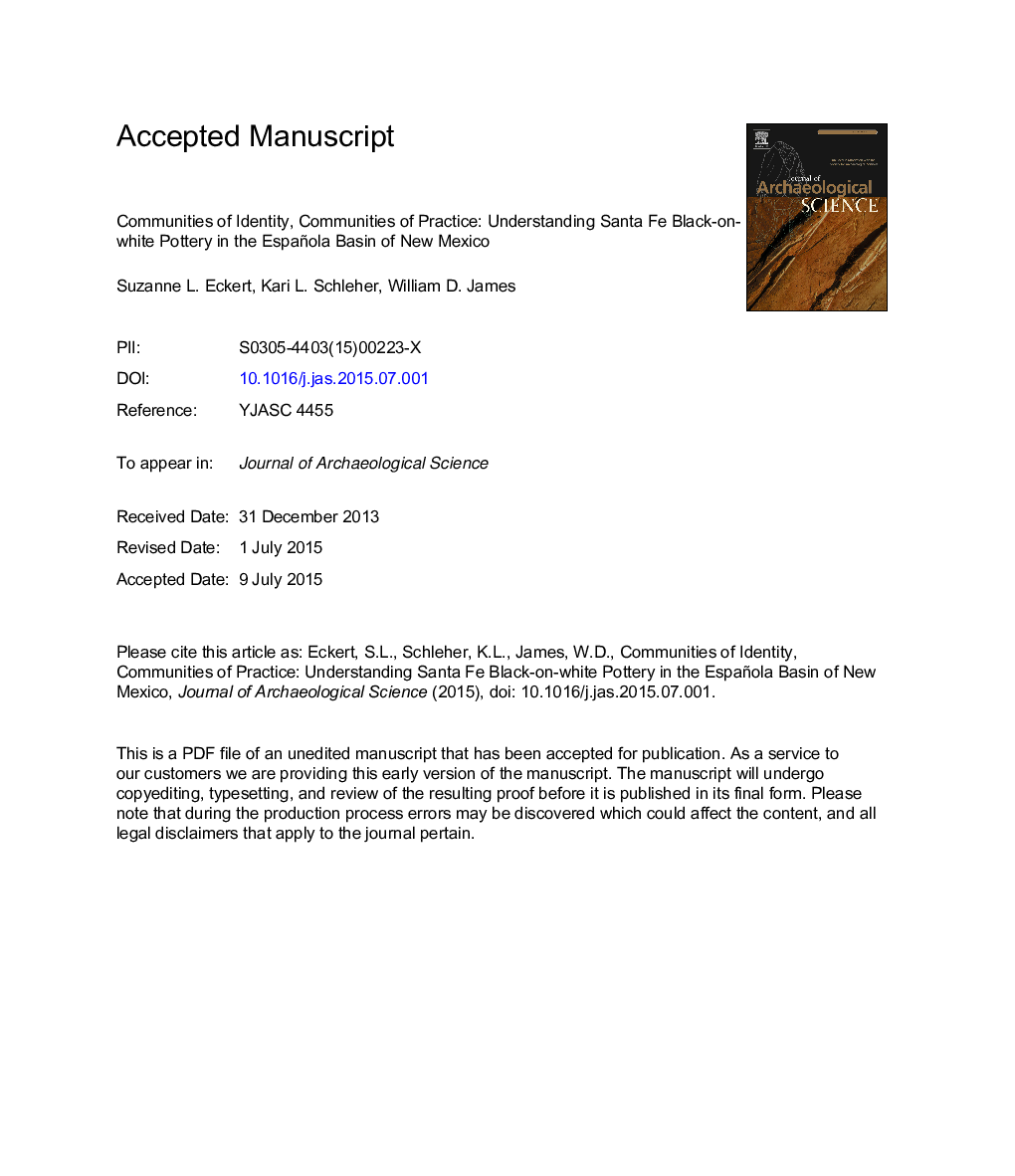| Article ID | Journal | Published Year | Pages | File Type |
|---|---|---|---|---|
| 7441604 | Journal of Archaeological Science | 2015 | 28 Pages |
Abstract
The research presented here focuses on Santa Fe Black-on-white pottery produced during the Late Coalition/Early Classic Transition (AD 1250-1350) in the northern Rio Grande region, New Mexico. We combine design data with compositional analyses to gain a greater understanding of ceramic production and circulation in this region and to evaluate the communities of practice and communities of identity reflected in pottery. We combine mineralogical and INAA chemical compositional datasets to argue for at least three production provenances; we further argue that nine potential petrofacies represent different resource procurement zones within the production provenances. We argue that these data, combined, represent a minimum of three different communities of practice. Despite multiple communities of practice, similar designs were being used as decoration that reflects a single community of identity. We argue that during this transitional time period examined here, producers of Santa Fe Black-on-white were intentionally practicing a form of identity maintenance across all of the villages in which it was produced.
Related Topics
Physical Sciences and Engineering
Materials Science
Materials Science (General)
Authors
Suzanne L. Eckert, Kari L. Schleher, William D. James,
